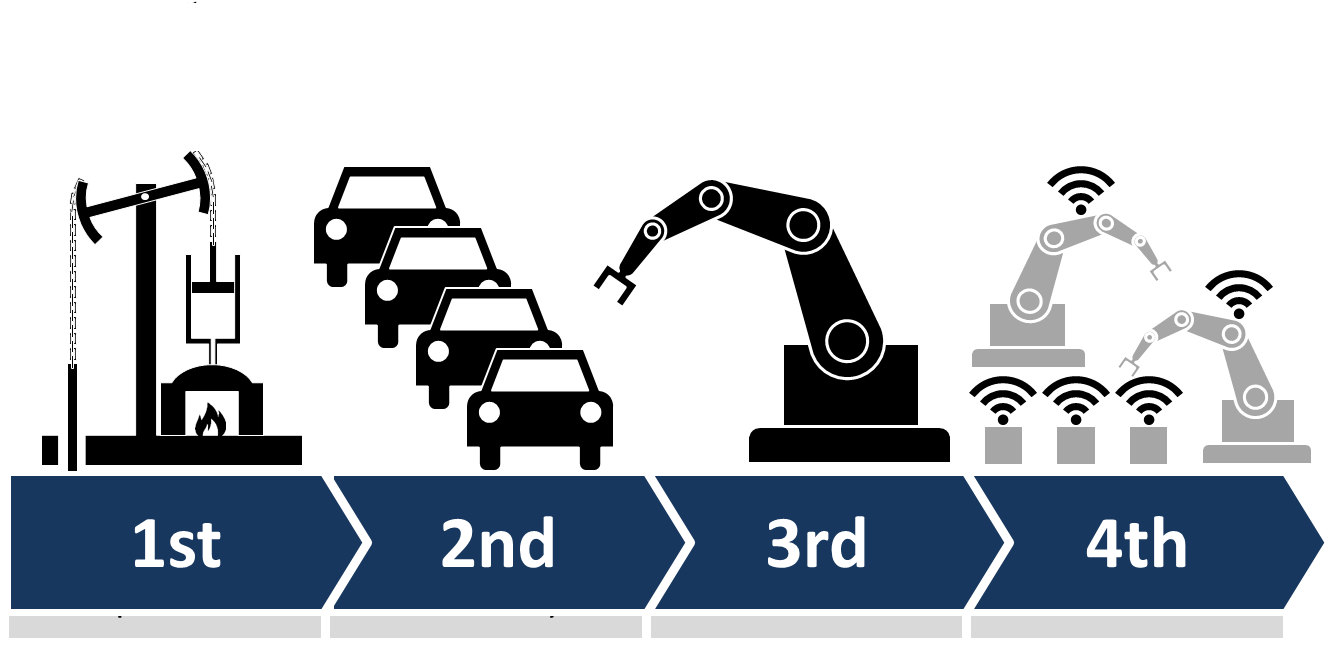Our Cantina Speaker Series was back in action this month when we invited Joe Biron from PTC as the second speaker in our series focused on the Internet of Things (IoT). You might remember our first event centered on the role IoT might have on cities. This time around, we brought in an expert on the less-talked-about Industrial IoT and how connected products and systems are helping to solve humankind’s grand challenges.
Turnout at the event included representation from companies like Verizon, Wayfair, Salesforce, PTC and our new client SyncThink, a company using VR technology to help screen for concussions.
The evening was filled with insightful takeaways and key trends that sparked thought-provoking conversation among the guests. Let me share the best takeaways from the evening. If video is more your style, you can watch Joe’s full presentation below. Just a quick word: there is some swearing in this video so you might want to put on headphones or watch it when you feel comfortable.
Key takeaways in the Industrial IoT:
The Industrial IoT (as defined by Joe) is when we are using connectivity, sensing, analytics, cloud applications and advanced software to solve grand challenges of the human mind. He went on to explain that making “things” smarter lets us see what is happening right now, but, more importantly, predicts what will happen in the future.
There have been four industrial revolutions in our lifetime.

The first one started when humans invented basic machines that relied on the use of human muscle or animal muscle to power them. Then we figured out we could use other sources like coal or steam to do the heavy lifting.
In the second phase, we learned how to use machines to assemble parts for mass production. This story is familiar to many who read about Henry Ford’s assembly line in history class.
The third revolution ushered in computers and automation to do what a human used to do but more precisely and safely.
The fourth industrial revolution, which is happening now, is trying to get everything from control of manufacturing to computer-assisted design working together. Elon Musk calls this the “machine that makes the machine” because the factory is the hub for all the systems that are going on.

The idea of the Industrial IoT is to better understand what is happening or what will happen throughout the entire manufacturing process. This grand challenge requires a reimagining of how computers and systems talk to each other, a reevaluation of where sensors are placed and what their purpose is, and software that is adaptive, predictive and error-free.
Technology that endure longevity is destined to become invisible but super critical to our lives. For example, no one thinks twice about a 100 watt electric wall socket, but travel back in time to late 1800s and ask what they think about it.
IoT is the intersection of cool stuff and things that are critical to our lives. If we can find a way to make the critical stuff that runs the world (e.g. electricity, wastewater plants, nuclear energy) better because of some cool new stuff, then we can deliver on the promise that IIoT is here to solve humankind’s grand challenges.
How can Cantina help you get started with IoT?
The interface between humans and Internet of Things devices is a promising and valuable aspect of this emerging technology. Strong user experience, coupled with effective service design and technical sophistication, is required to build compelling, usable and secure IoT products and services. If you are creating an IoT solution, you’ll need a broad range of skills, information and resources.
To create a successful IoT product, you need to start to focus on key elements of the experience. This includes user experience, service design, strategy and user research, and testing. You need a partner to help you cover the complete IoT development and deployment landscape, from conception to completion. Cantina is here to help.
IoT Workshops
You know that you need to bring an IoT product to market, but you’re not sure where to get started. A one-day IoT Workshop will help you clarify your goals and get a handle on what resources and time you’ll need to get moving, and ultimately, to deliver.
Product Feature Definitions
Creating IoT products and services is challenging: you need information to guide your decision-making. Solid research on markets, competition, business models and technical feasibility help craft a solution to bring the right product to market.
Product Design Research
Working agile is great, but you still need a plan. Having a service blueprint and a curated backlog of features gives you a foundation to move ahead.
Design Sprints
Design sprints are a fast, effective way to answer questions, prototype concepts, and test solutions: they produce answers in just a week. They are an ideal way to rapidly evolve your IoT project.


